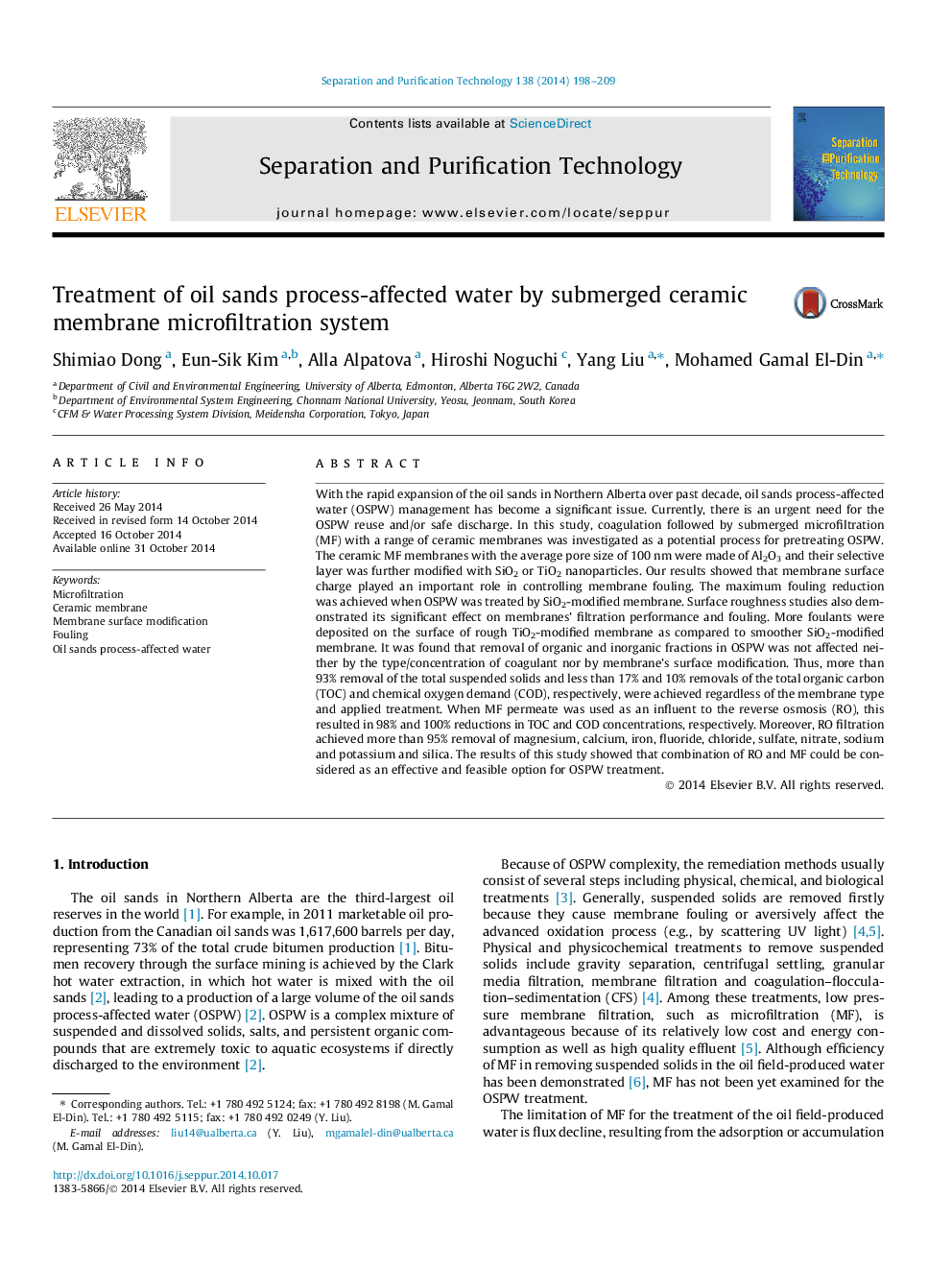| Article ID | Journal | Published Year | Pages | File Type |
|---|---|---|---|---|
| 640868 | Separation and Purification Technology | 2014 | 12 Pages |
Abstract
With the rapid expansion of the oil sands in Northern Alberta over past decade, oil sands process-affected water (OSPW) management has become a significant issue. Currently, there is an urgent need for the OSPW reuse and/or safe discharge. In this study, coagulation followed by submerged microfiltration (MF) with a range of ceramic membranes was investigated as a potential process for pretreating OSPW. The ceramic MF membranes with the average pore size of 100Â nm were made of Al2O3 and their selective layer was further modified with SiO2 or TiO2 nanoparticles. Our results showed that membrane surface charge played an important role in controlling membrane fouling. The maximum fouling reduction was achieved when OSPW was treated by SiO2-modified membrane. Surface roughness studies also demonstrated its significant effect on membranes' filtration performance and fouling. More foulants were deposited on the surface of rough TiO2-modified membrane as compared to smoother SiO2-modified membrane. It was found that removal of organic and inorganic fractions in OSPW was not affected neither by the type/concentration of coagulant nor by membrane's surface modification. Thus, more than 93% removal of the total suspended solids and less than 17% and 10% removals of the total organic carbon (TOC) and chemical oxygen demand (COD), respectively, were achieved regardless of the membrane type and applied treatment. When MF permeate was used as an influent to the reverse osmosis (RO), this resulted in 98% and 100% reductions in TOC and COD concentrations, respectively. Moreover, RO filtration achieved more than 95% removal of magnesium, calcium, iron, fluoride, chloride, sulfate, nitrate, sodium and potassium and silica. The results of this study showed that combination of RO and MF could be considered as an effective and feasible option for OSPW treatment.
Keywords
Related Topics
Physical Sciences and Engineering
Chemical Engineering
Filtration and Separation
Authors
Shimiao Dong, Eun-Sik Kim, Alla Alpatova, Hiroshi Noguchi, Yang Liu, Mohamed Gamal El-Din,
